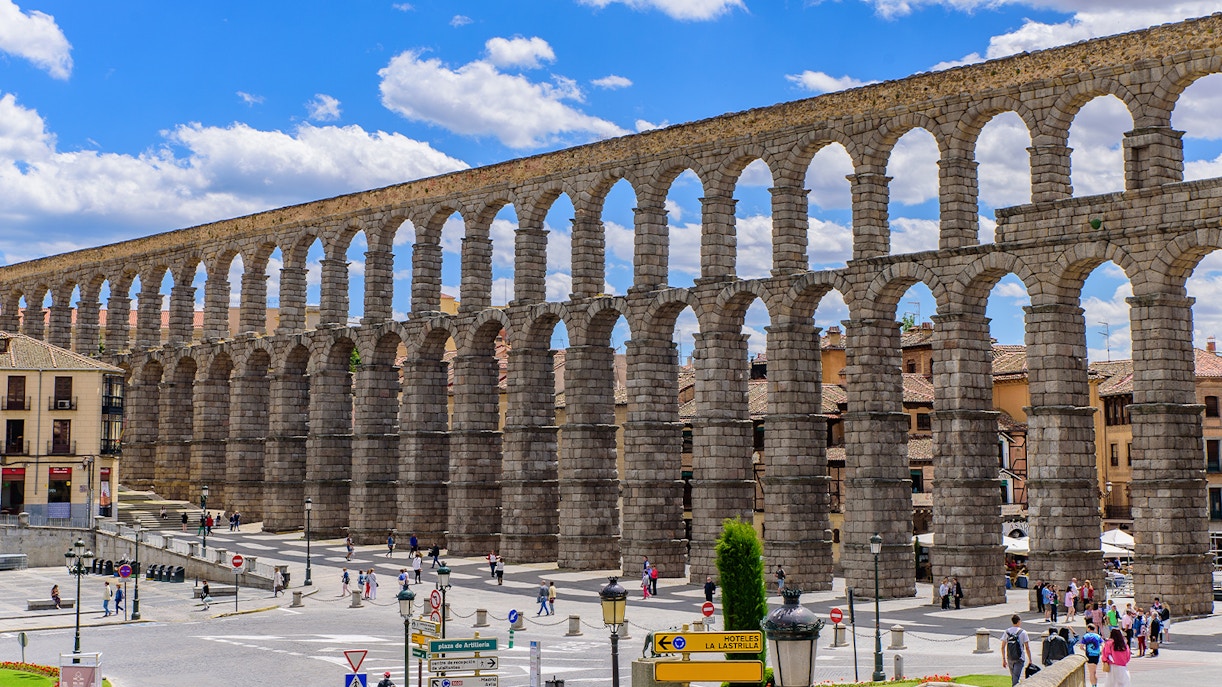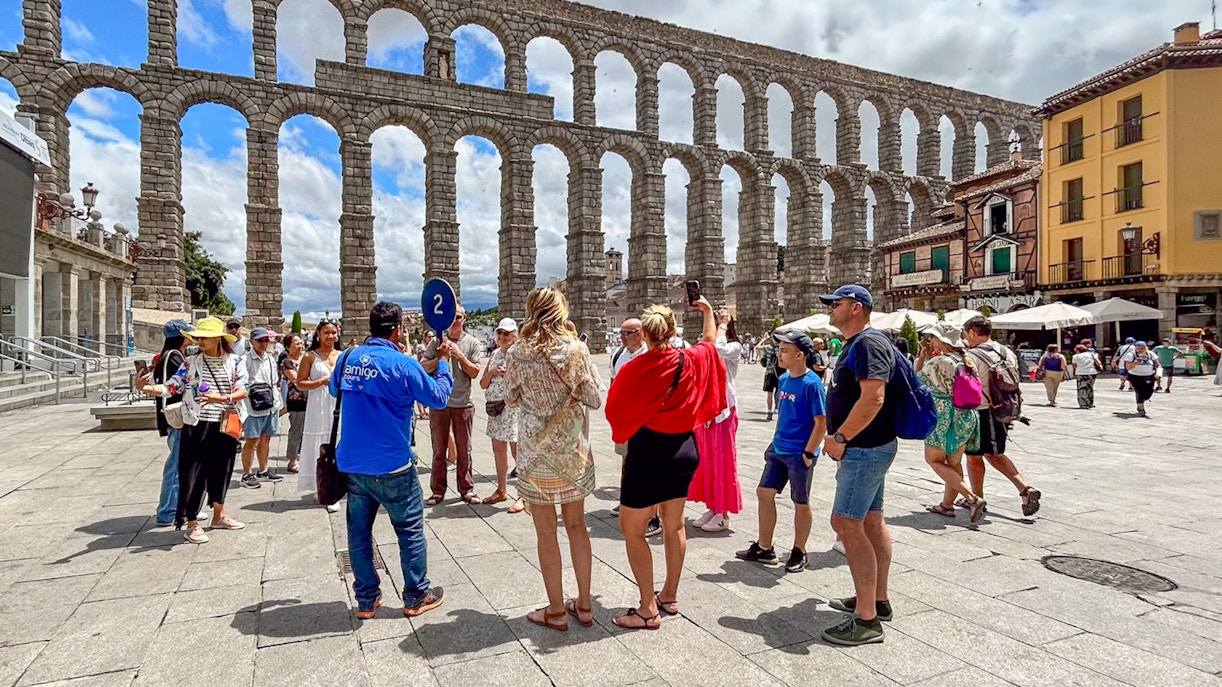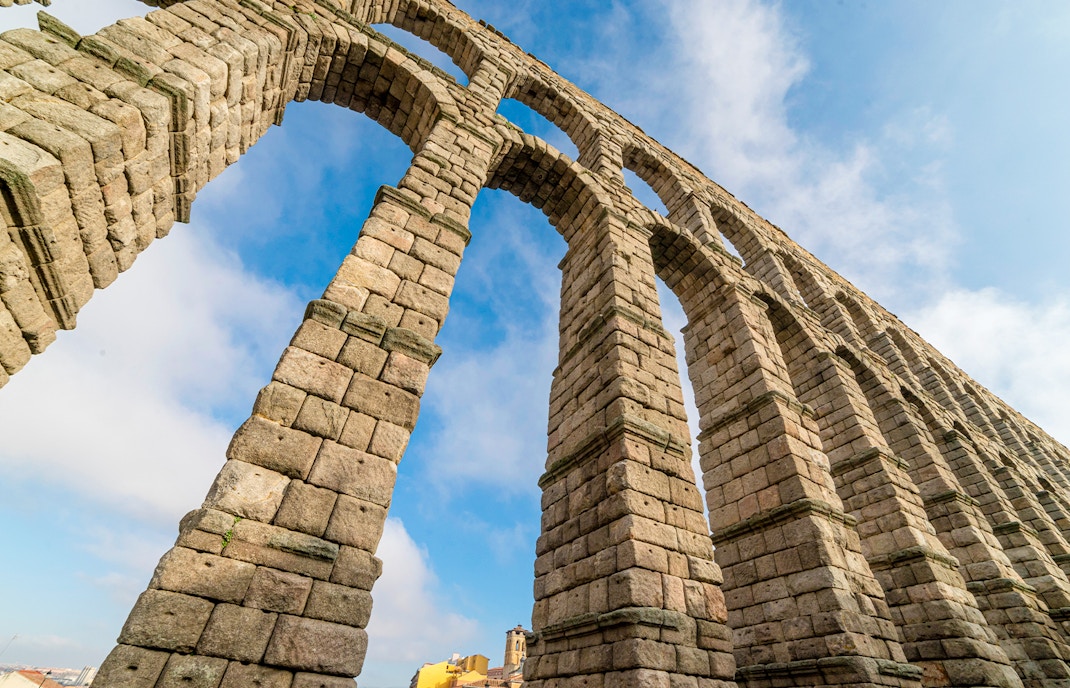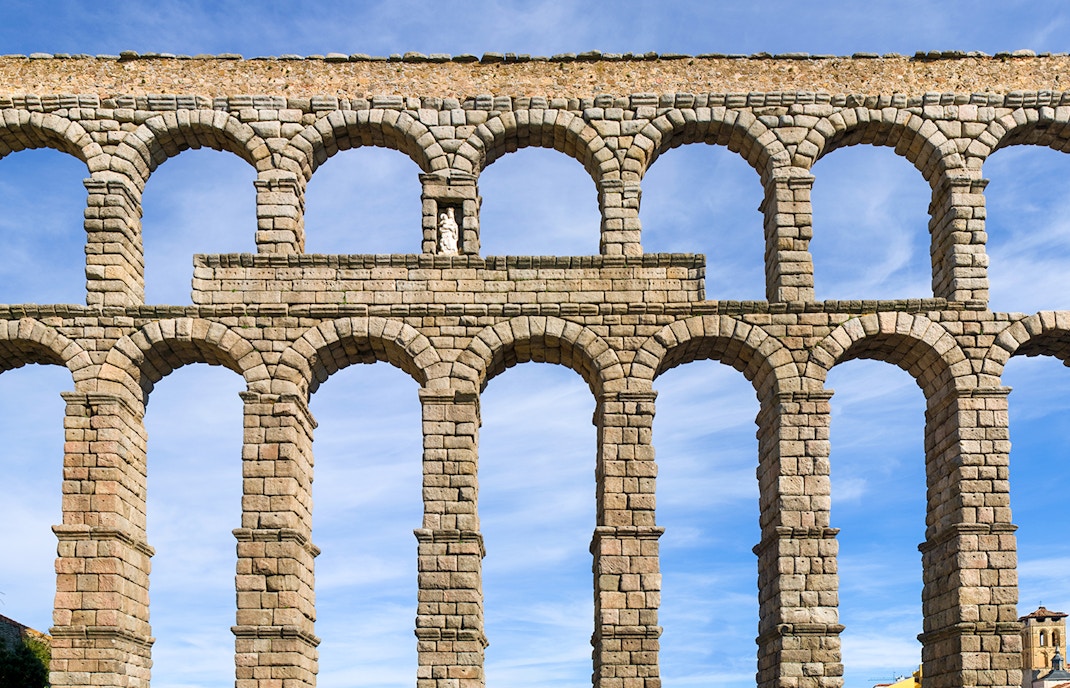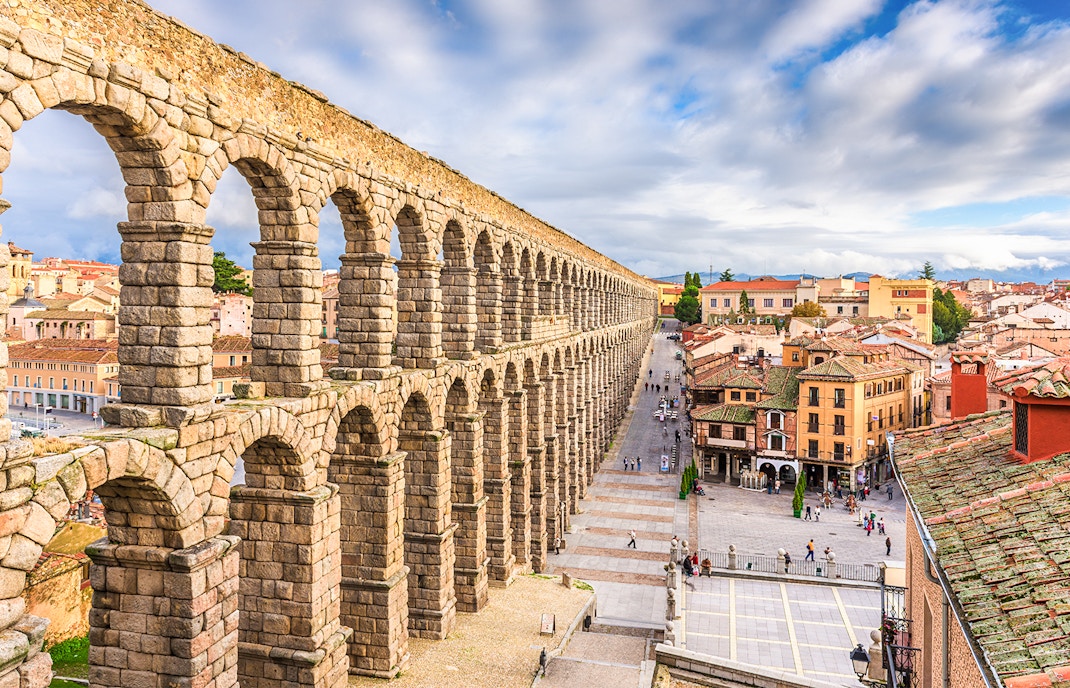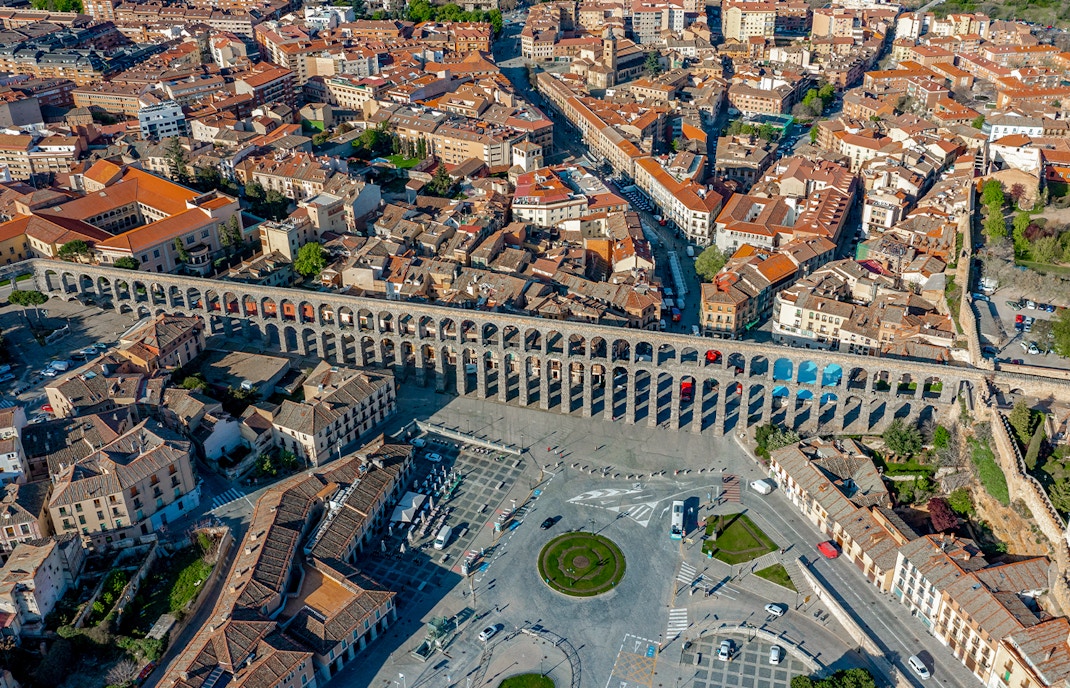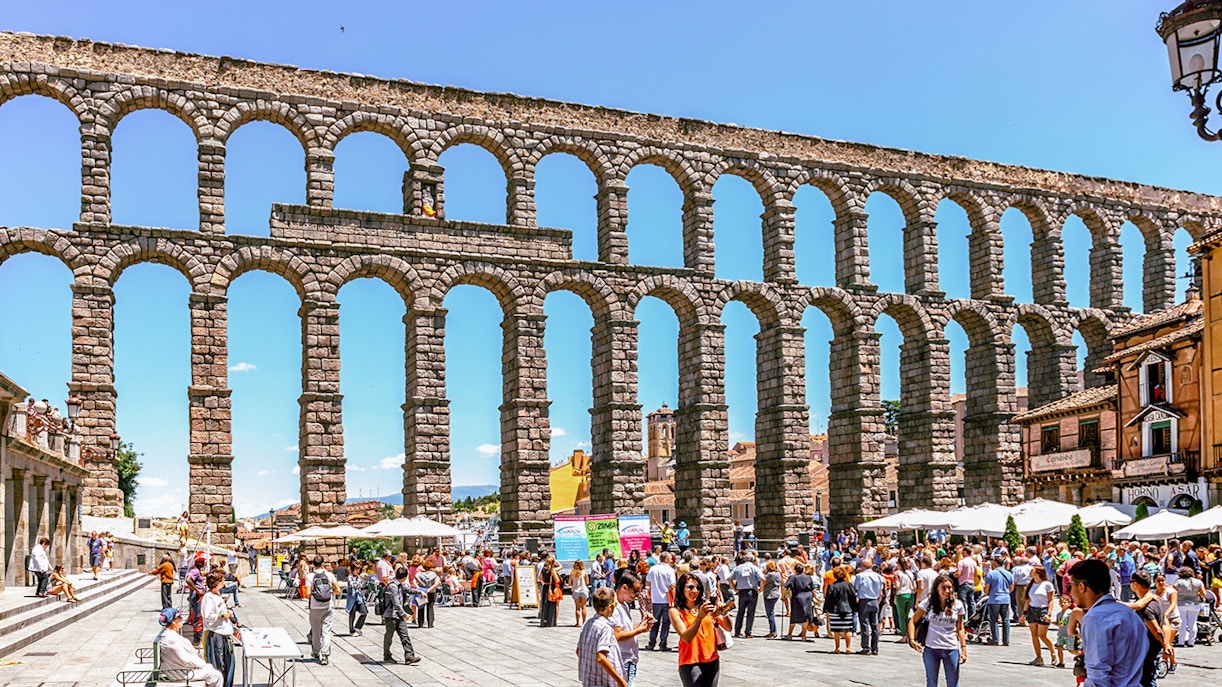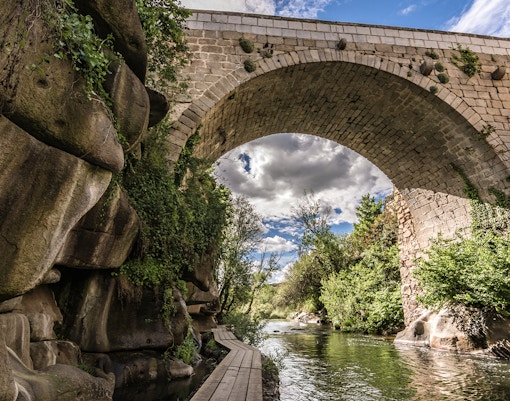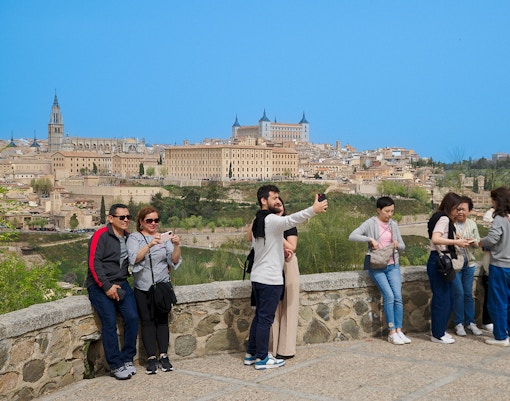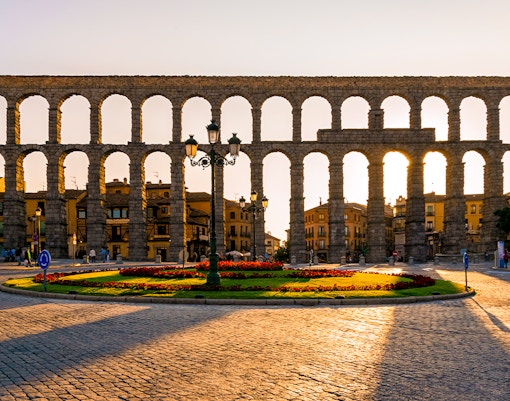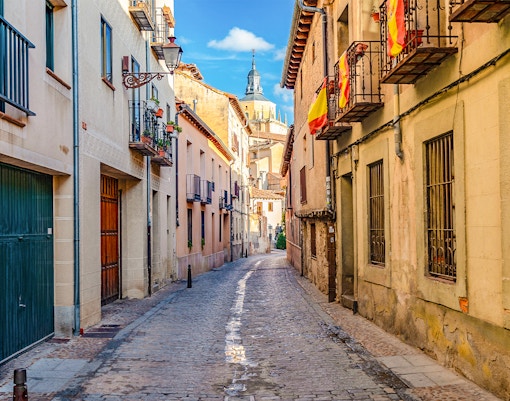The Aqueduct cuts through the heart of Segovia, starting at Plaza del Azoguejo and running toward the Alcázar. You don’t need a ticket—it’s completely free to explore at any time of day. Simply walk beneath its mighty arches or climb to nearby viewpoints for sweeping panoramas. Segovia day trips often include commentary here, sometimes paired with visits to the Alcázar and Cathedral.
How to access the Aqueduct of Segovia
